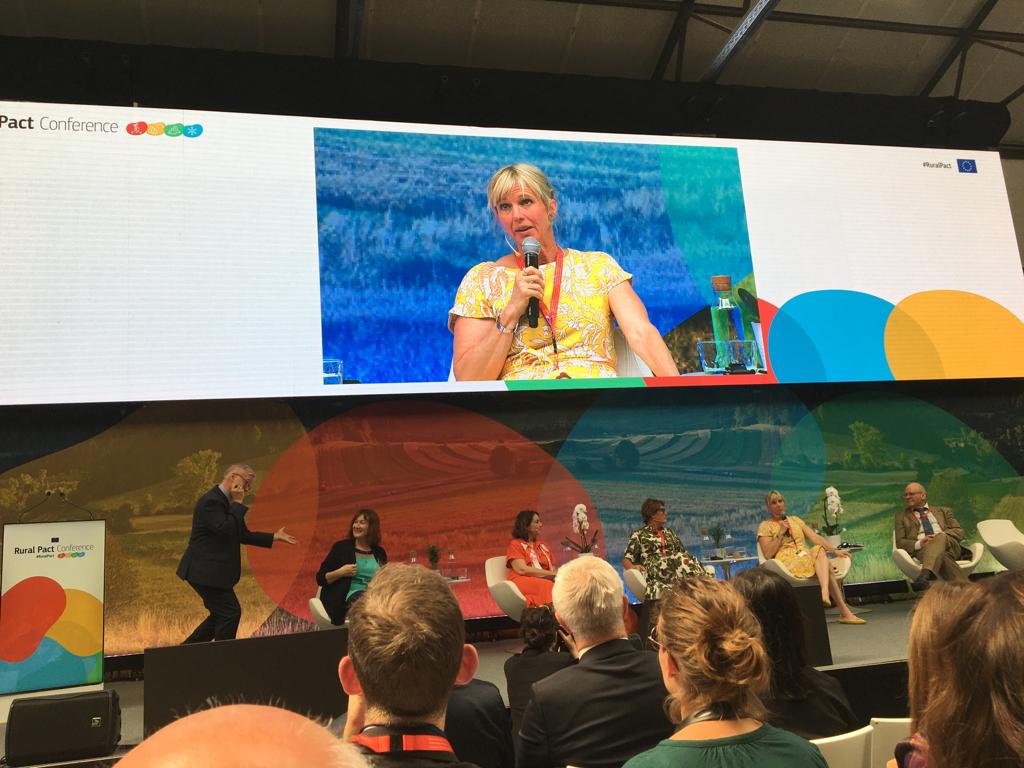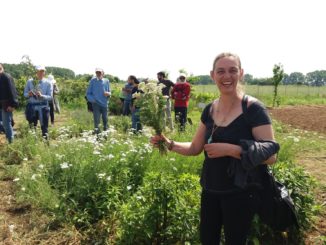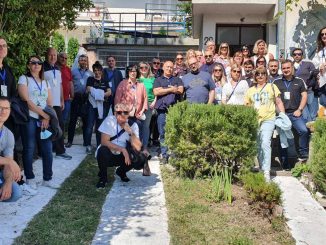
A year after the European Commission adopted a Communication on “A long-term Vision for the EU’s rural areas – Towards stronger, connected, resilient and prosperous rural areas by 2040”, it hosted a Rural Pact Conference in Brussels on June 15 and 16. Some 450 stakeholders participated. ARC2020 comments on its impact.
By Alison Brogan and Hannes Lorenzen
What could a “Rural Pact” change in the EU’s rural agenda?
The Rural Pact is an initiative of the European Commission’s Long-term Vision for the EU’s Rural Areas. It aims at mobilising rural stakeholders, such as competent member state authorities, civil society organisations, businesses, individuals and research bodies. Through the Pact, the Commission invites these stakeholders to work together towards the ten goals identified in the Long-Term Vision.
Different from rural development programmes run by the member states, the Rural Pact is a framework for voluntary cooperation. While some of the stakeholders who gathered at the Rural Pact Conference are being financed through research and evaluation projects of the EU, like Horizon 2020 and European Innovation Partnerships (EIPs), most of them have been contributing to reflection and visioning on a voluntary, unpaid basis for many years.
However, a policy and financial framework which would integrate and simplify rural development measures and financing is still not on the horizon. Rural development programming and funding remain very much the secondary pillar of the CAP. Indeed, from the bright start of the Cork declaration of 1996, Pillar two of the CAP is so often the one proposed for cuts, or suffering cuts, as we have shown many times (in 2012, 2013, 2018, 2019 and 2020 as some examples).
Even so, the conference can be seen as a useful meeting moment for engaged citizens, researchers and interested authorities, and a nice opportunity for networking. So what transpired?
Encouragement to cooperate in a business as usual policy framework
The Commission suggests the Pact as a framework for cooperation among authorities and stakeholders at the European, national, regional and local level. “Exchange of ideas and best practices at all levels” now suggested for the Pact has in fact been the task of existing national and European Rural Networks for decades. The invitation to stakeholders to join the Rural Pact Community and share reflections and ideas is therefore not innovation. It might become another time consuming consultation process without the necessary progress in policy and funding integration.
Along with the Rural Pact, the Commission offers to submit a rural action plan, a rural revitalisation platform with a new website, and a rural observatory to gather further data. These elements had been announced for June 2022 but will probably only be established by the end of the year. Whether these initiatives will create enough critical substance to urge member states to make substantial changes in their National CAP Strategic Plans by 2024 remains to be seen.
Wind at our backs or hot air circulating? Mixed messages from the top
Commission President Ursula von der Leyen opened the plenary session of the Rural Pact Conference via a video message which focused on the role of farming in Europe amid a looming food crisis and the Russian war on Ukraine. She said:
“[The crisis] confirms a core strength of our Union: our food supplies are resilient and healthy. In fact, we expect a record export of cereals of 40 million tonnes in 2022 and 2023 because for decades we have invested in our farmers and farms and in the decades to come we must expand and build on this strength”.
Von der Leyen described rural areas as at the heart of the green and digital transitions. She highlighted digitalisation and new technologies as important innovations to make abandoned land profitable for farming again. She also mentioned an EU sponsored Smart Village programme in Greece that is testing precision farming on olive trees and honey. So far, so farming.
“The green and digital transitions give us a unique opportunity”, the President of the Commission closed her speech, “with Next Generation EU – Europe’s historic 8 billion euro recovery fund, the wind is at our backs – not just to revitalise our countryside, but for rural communities to take control of their own future. And this is why the Rural Pact was born: a pact to drive the transformation, a pact between everyone in Europe who is invested in the future of our rural communities. I am proud that the Rural Pact is no longer an idea on paper but has grown into a living community of over 1,000 organisations and individuals. I invite all rural stakeholders to join the community. Now is the time to come together.”
Drilling down into the figures, Next Generation EU will add somewhat to rural supports, and to supports that can work in rural areas, but the amounts involved – considering the scale of investments needed – will do little to reverse what is in fact a growing divide between rural and other areas.
Less financial resources for rural development
EU Commissioner for Agriculture Janusz Wojciechowski, who also beamed into the conference via video, vowed to work hard towards cooperation on the ten shared goals of the Long-Term Vision, and to “address the needs of rural areas to fully realise their potential. We not only need strong actions and strong funding; we also need strong cooperation.”
However, DG AGRI, responsible for rural development programming and management has substantially reduced its staff, impacting also on rural development management. Furthermore, the Commissioner, just recently allowed Member States to shift 1.4 billion euro from the second (rural) pillar of the CAP to the first pillar (agriculture). While means to achieve short-term food security goals make some sense, albeit within a flawed, resource-intensive agri-food paradigm, investments into long-term resilient rural infrastructure are also urgent. These signals to Member States and investors risk downgrading engagement for an integrated approach to rural development policies.

Critical voices could be heard too. ELARD’s President Marion Eckardt welcomed the coming together of civil society with the EU institutions at the Pact Conference. She also stressed the importance and experience of Local Action Groups (LAGS) and their mainly voluntary action for rural development: “We do a lot already on the local level. But local rural actors feel they are not sufficiently listened to and supported. I think LAGs are the only actors working with a participatory methodology promoting transformative action for climate change, innovation, smart villages, youth and culture on a daily basis.”
She also pointed to the importance of rural civil society movements like the Rural Parliaments and the support ELARD received from the Economic and Social Committee in demanding 15% of all EU funds for local rural action:
“We keep saying [these things] but it never becomes reality. Why not? If we really want to invest in local people there has to be funding. To make us tick boxes so it looks statistically good – without involving civil society – is really too easy. ”
MEP Isabel Carvalhais, Rapporteur on the Long-term vision for the EU’s rural areas for the AGRI Committee in the European Parliament also noted the importance of actually listening to what rural actors are saying:
“Many rural communities in Europe have a sense of abandonment … It is not that rural communities are not being heard, it is that nobody is actually listening to them. Everyone knows the message but somehow between the diagnosis of needs and the political decision process, the message gets lost. It is really important that we amplify the voices of the rural world and make sure that they are active parts of the entire decision-making process. The Rural Pact can have an important role in this regard. It creates that opportunity to bring and keep rurality at the centre of the political debate.”
Who will own the Rural Pact?

Governance of the Rural Pact will be in the hands of a coordination group of 20 representatives from each membership category (public authorities, civil society organisations, business, individuals and research bodies), selected by the Commission. This group will be responsible for evaluating progress towards the ten goals of the Long-Term Vision, monitoring the commitments to action made by its members and engaging and encouraging stakeholders to become members of the Pact – a kind of enrolment procedure.
The Commission’s role in the Rural Pact is supposed to be faciliatory. For 2022 and 2023 this includes actions like launching a new EU rural website, establishing a Rural Revitalization Platform, meeting with the other EU institutions and assessing the level to which EU funds support rural areas.
Is this buck passing to other levels of governance? Is this initiative, like the many public consultations on CAP reform, dialogue groups and hearings with stakeholders again built upon voluntary work which has exhausted civil society groups for many years? Why is there still no infrastructure which allows rural stakeholders to take action together and not just exchange about much needed dedicated cooperation?
While the Horizon 2020 and EIP research community will be happy to continue gathering data and make new rural development proposals, what will the wider rural community and rural movements be able to contribute to the Pact apart from being interviewed and quoted as success stories and engaged citizens? Important players like the European Rural Parliament and others were this time recognised as partners, but play a role as supplier of good ideas rather than having access to relevant resources to back up a wide range of voluntary work.
Tom Jones, former member of The EU’s Social and Economic Committee and of the European Rural Parliament steering group, commented during the Rural Pact Conference: “When it comes to funding an infrastructure to enhance voluntary work – which many of us are offering since many years – the Commission seems to be hesitating. For making a rural pact a success we need an open mind and an open hand for a supportive scaffolding.”

In her contribution to the opening plenary session, MEP Carvalhais stressed that rural communities must have a sense of ownership over the processes that affect their own communities: “It is a positive thing that the Rural Pact reflects this idea of engaging all levels of governance and involving all rural actors. But, we cannot forget that we have many rural communities who do not possess these empowering tools at the moment. One main focus of political action right now, must be the creation of this enabling environment that will empower the voices of people in the rural world.”
The session on ‘Cooperating across departments and governance levels’ on the first day of the Rural Pact Conference did highlight the role public authorities at the national and regional level can play for rural areas. The examples presented from France, Ireland and the Castilla-La-Mancha region in Spain show how rural areas can be supported in a holistic way.
While it is of some use to amplify and share these inspiring stories, it is simply not enough anymore. Nor do the emerging elements of a Rural Action Plan and its 30 flagship initiatives go far enough towards the scale of the structural changes required in rural policy regarding the challenges now.
More dedicated integration of rural policies is necessary at all levels, starting with the EU’s funding mechanisms. Stakeholders expect much more decisive leadership from the EU – as well as action at national, regional and local levels.
Action Needed Now – including an overarching policy framework at EU level
A concern with the Rural Pact Conference and the Pact itself is that it will not lead to any concrete action – just a continuous low level hum that diverts attention from the things that matter. What impact will it have on real policy, programming and strategy for rural areas in the running programming period?
There are many wonderful examples of civil society and willing administrations taking action to overcome challenges they face and seize the opportunities open to rural areas in a green, digital and social transition, but such action requires a good overarching policy framework in order to become the rule and not the exception.
“Rural Europe Takes Action – No more business as usual”, the book ARC2020 launched together with Forum Synergies just a week ago at the European Parliament in Strasbourg, shows how rural communities achieve remarkable results despite the complexity and difficulty of accessing funds and policies that are supposedly there to support them. This situation needs to be turned on its head by making a series of structural changes which place rural areas and rural communities onto a much more favourable playing field.
The Rural Pact Conference highlighted regions and countries such as Castilla La Mancha and Ireland that are transforming structural conditions in rural areas with public policy. However, the Commission itself is lagging far behind the positive examples that it presents and must show real leadership on integrated policy for rural areas and not just more nice words.
Here are some actions proposed in Rural Europe Takes Action that the EU and Member States can take now to support rural communities:
- Targeting different types of rural areas with integrated rural programmes based upon a sound analysis of rural (and urban) territorial dynamics, the participatory identification of the needs of people in different types of territory, and policies targeted to respond to them.
- Coordinated multi-sectoral policy based on high-level political leadership, clear division of responsibilities between sectoral departments, effective coordination mechanisms, transparent targets, earmarked budgets and participatory monitoring.
- Empowering rural people – via preferential tax rates for people living in certain types of rural area, favourable investment criteria and co-financing rates for these areas and for projects meeting certain criteria (e.g. accessible small-scale infrastructure for local producers), simplification, reduced thresholds and additional technical assistance and capacity building, umbrella schemes, simplified cost options, flexible rules and incentives to encourage rural-rural and rural-urban cooperation, ensuring that national legislation enables community initiatives, on energy/digital/mobility, short supply chains and sustainable agriculture etc.
CAP Strategic Plans and Cohesion Policy Programmes for the programming period beginning in January 2023 should include these elements if they are to contribute to the Long-term vision for the EU’s rural areas.
Beyond that, in order to fulfil the longstanding declared ambition to establish a “fully fledged multisectoral rural development policy” – there is a need to transform the Common Agricultural Policy – which treats rural policy as an annex – into an integrated Rural Policy that responds to the needs and aspirations of rural communities but also enables and empowers them to act in ways that contribute to societal well-being.
The Unwritten Regulation for an Integrated European Rural, Agricultural, and Food Policy (ERAP) (from page 162 of Rural Europe Takes Action, also available here as a dedicated PDF: The Unwritten Regulation) is an offering to the EU Institutions as they consider what to do with the next CAP, and to Member States to use to adapt their strategic plans before the next programming period. This draft is a work in progress; we invite rural stakeholders – public, private, at every level, in every sector – to get in touch and help us improve it!
More
Rural Europe Takes Action | For Resilience and Peace – Political Action Now!
Rural Europe Takes Action – Book Launch and Draft EU-Regulation







